Organics 101 – How to Grow Plants Organically Like a Boss
Growing plants organically? It’s about letting plants grow as they would in nature. Doing this brings out your plants' true genetics, especially the flavour & aroma.
Here’s what you need to know about growing plants organically indoors.
Organic vs. Mineral Growing
It’s all about how plants get their nutrients.
If you feed mineral nutrients:
You feed plants directly. The minerals in your feed are readily available to plants.
Using organic additives:
You feed the soil & microbes. To get food, plants rely on the microflora in soil. These microbes decompose organic matter into nutrients that plants can use.
Dan from Biobizz explains it well:
Why Grow Organically?
As Dan from BioBizz put it in the video, you aren’t steering your plants when you grow organically. You’re letting them do their thing, as nature intended. This means you bring out their natural traits.
Also, growing organically is a very forgiving way to grow…because of the microbes.
Microbes support plant growth and health in lots of complex ways! They support uptake. They outcompete harmful root pathogens. Overall, they’re pretty handy to have around. Add to this the fact you’re growing in soil and it’s tough to go wrong.
Principles of Growing Organically
So, when growing organically, remember that:
1) Soil is most suitable
Soil is the best choice for growing organically. It’s the ideal home for microbes to thrive in and make nutrients available for your plants.
2) Biodiversity is key
It’s important that you encourage biodiversity.
- Choose a good quality organic soil
- Avoid using harsh chemicals that may harm microbes in your media (including pH adjusters)
- Use dechlorinated water – chlorine can harm microbes
- Avoid anything that may sterilise your soil - e.g. Silver Bullet
3) You’re using biologically active ingredients
- Don’t leave nutrients standing – they can ferment.
- Don’t use air stones or bubblers – oxygen doesn’t mix well with organic additives.
- Pick the right system. Don’t use drippers or micro irrigation systems. Organic nutrients tend to be thicker and can block drip lines. Most organic growers hand water. But you can use a RhizoSystem (Drain Only) - Standard or XL.
Traditional vs. Living vs. ‘No Till’ Organics
If you grow organically, there are three ways to do it.
Traditional Organics
You use an organic growing media. You feed with organic nutrients, like Biobizz. The method isn’t that different to growing in soil with mineral feeds. You just need to be aware that your nutrients are biologically active.
Living Soil Organics
You don’t need to feed with liquid nutrients at all.
Instead, you use supercharged soil, like Ecothrive Eco-Life. These soils are teeming with microbes and come pre-loaded with the nutrients plants need from start to finish.
To make sure you don’t overload plants, the nutrients are locked up in organic ingredients. The microbes in your media unlock these nutrients, as plants need them.
You don’t need to feed. You don’t need flush. All you need to do is keep your media moist.
‘No-Till’ organics
This method of growing organically is very popular in the US. The name comes from the agricultural industry - ‘tillage’ is how farmers prepare soil. So ‘No-Till’ is where you grow without disturbing the soil at all.
This approach is very sustainable and warrants its own blog post, but as the basics you:
- Prepare a living soil mix
It’s the same kind of supercharged soil you use for living soil organics.
- Use raw organic ingredients as top dressings
For example, seaweed meal, frass, neem meal etc.
- Use a mulch on top of the soil
Usually, this’ll be chopped straw along with plant leaves and stems from the previous grow.
This layer protects the soil from drying too quickly. And, as the mulch slowly decomposes, a highly biologically active top layer is created.
- You add worms to the pot you are growing in
The worms are a huge benefit! Firstly, they mix the soil for you. And as they feed off the top dressings and the mulch layer, they create a rich surface layer of fresh worm castings!
- You re-use your soil
When you harvest, you plant straight back into the same soil. You can re-use it many times over. No more taking bags of soil in and out of your home - with no-till growing, you can use the same large pots of soil for many years.
- Need to use way more media than normal
This is to let the microbial activity happen.
- Don't water to run-off as you normally should
You want to keep your media moist, but not over-saturated. It’s always better to water little and often and ensure you have even water distribution throughout your media.



